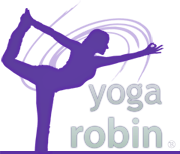Blood: its plasma and cells
The main organ of the Cardiovascular System is the heart. Its beating keeps us alive. The heart's main purpose is to pump blood through our veins.. Blood is our life force. Our heart is physical but has emotional purposes too that drive us.
Blood plasma is 92% water
Blood is a connective tissue. It’s an aqueous solution made up of blood plasma and blood cells. The plasma is 92% water, and the rest consists of metabolic waste products from cells, hormones, nutrients, dissolved gases, clotting proteins and ions.
The proteins in plasma fall into 3 categories: a) albumins maintain blood osmotic pressure and contribute to the viscosity of the blood, responsible for maintaining consistent pH in the blood, transporting fatty acids and hormones; b) globulins are part of the immune response and body’s defense; c) fibrinogens are a product of the liver, involved in blood clotting.
Healthy blood protect body from disease
Healthy blood cells are 99% red blood cells, and 1% white blood cells and platelets. The blood cells are suspended in the liquid plasma. Blood cells and other components protect the body from disease by recognizing and destroying microorganisms and foreign molecules in the bloodstream, transporting metabolic waste from the cells to the kidneys, carrying nutrients from the Digestive System to the cells, and hormones throughout the body.
Everything that we take into our body ends up in our blood stream. We learned that that Urinary System forms urine from the blood plasma (via the kidneys), and that this contributes to blood pressure. The kidneys carry blood, filtrate it, and get rid of the waste to cleanse it.
 blood cells,
blood cells,  blood plasma,
blood plasma,  heart,
heart,  red blood cells,
red blood cells,  white blood cells
white blood cells 